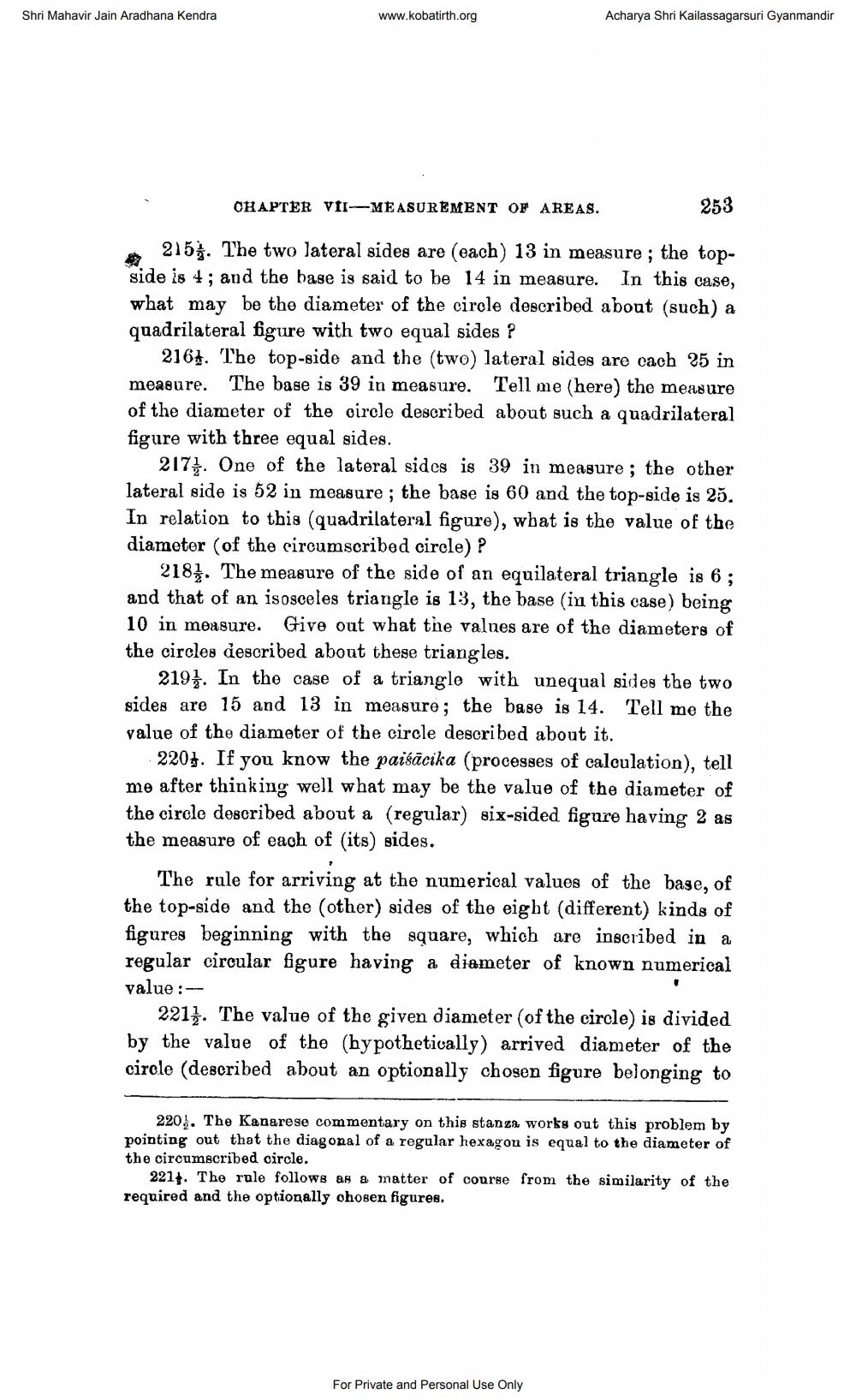________________
Shri Mahavir Jain Aradhana Kendra
www.kobatirth.org
Acharya Shri Kailassagarsuri Gyanmandir
CHAPTER VII---MEASUREMENT OF AREAS.
253
215]. The two lateral sides are (each) 13 in measure ; the topside is 4 ; and the base is said to be 14 in measure. In this case, what may be the diameter of the circle described about (such) a quadrilateral figure with two equal sides ?
2161. The top-side and the (two) lateral sides are cach 25 in measure. The base is 39 in measure. Tell me (here) the measure of the diameter of the circle described about such a quadrilateral figure with three equal sides.
2171. One of the lateral sides is 39 in measure ; the other lateral side is 52 in measure; the base is 60 and the top-side is 2). In relation to this (quadrilateral figure), wbat is the value of the diameter (of the circumscribed circle) ?
2181. The measure of the side of an equilateral triangle is 6 ; and that of an isosceles triangle is 13, the base (in this case) being 10 in measure. Give out what the valnes are of the diameters of the circles described about these triangles.
2197. In the case of a triangle with unequal sides the two sides are 15 and 13 in measure; the base is 14. Tell me the value of the diameter of the circle described about it.
2204. If you know the paiśācika (processes of calculation), tell me after thinking well what may be the value of the diameter of the circle described about a (regular) six-sided figure having 2 as the measure of each of its) sides.
The rule for arriving at the numerical values of the base, of the top-side and the other) sides of the eight (different kinds of figures beginning with the square, which are inscribed in a regular circular figure having a diameter of known numerical value:
2211. The value of the given diameter (of the circle) is divided by the value of the (hypothetically) arrived diameter of the circle (described about an optionally chosen figure belonging to
220%. The Kanarese commentary on this stanza works out this problem by pointing out that the diagonal of a regular hexagon is equal to the diameter of the circumscribed circle.
2214. The rule follows as a matter of course from the similarity of the required and the optionally chosen figures.
For Private and Personal Use Only




